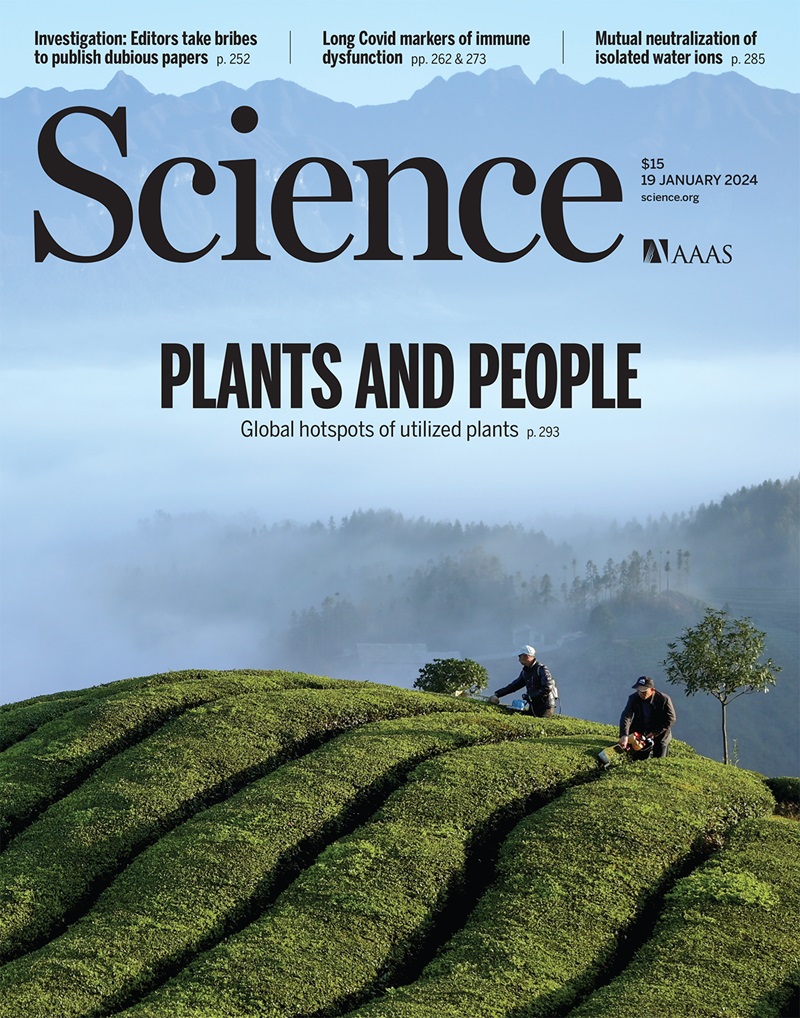Precise targeting of HIV broadly neutralizing antibody precursors in humans
IF 45.8
1区 综合性期刊
Q1 MULTIDISCIPLINARY SCIENCES
引用次数: 0
Abstract
A protective HIV vaccine will need to induce broadly neutralizing antibodies (bnAbs) in humans, but priming rare bnAb precursor B cells has been challenging. In a double-blinded, placebo-controlled phase 1 human clinical trial, the recombinant, germline-targeting envelope glycoprotein (Env) trimer BG505 SOSIP.v4.1-GT1.1, adjuvanted with AS01B, induced bnAb precursors of the VRC01-class at a high frequency in the majority of vaccine recipients. These bnAb precursors, which target the CD4 receptor binding site, had undergone somatic hypermutation characteristic of the VRC01-class. A subset of isolated VRC01-class monoclonal antibodies neutralized wild-type pseudoviruses and was structurally extremely similar to bnAb VRC01. These results further support germline-targeting approaches for human HIV vaccine design and demonstrate atomic-level manipulation of B cell responses with rational vaccine design.

精确靶向HIV广泛中和人类抗体前体。
一种保护性的HIV疫苗将需要在人体内诱导广泛中和抗体(bnAbs),但是启动罕见的bnAb前体B细胞一直具有挑战性。在一项双盲、安慰剂对照的1期人体临床试验中,重组种系靶向包膜糖蛋白(Env)三聚体BG505 SOSIP.v4.1-GT1.1在AS01B佐剂下,在大多数疫苗接受者中高频率地诱导vrc01类bnAb前体。这些靶向CD4受体结合位点的bnAb前体经历了vrc01类的体细胞超突变特征。分离的VRC01类单克隆抗体亚群中和野生型假病毒,在结构上与bnAb VRC01极其相似。这些结果进一步支持了人类HIV疫苗设计的种系靶向方法,并证明了合理的疫苗设计可以在原子水平上操纵B细胞反应。
本文章由计算机程序翻译,如有差异,请以英文原文为准。
求助全文
约1分钟内获得全文
求助全文
来源期刊

Science
综合性期刊-综合性期刊
CiteScore
61.10
自引率
0.90%
发文量
0
审稿时长
2.1 months
期刊介绍:
Science is a leading outlet for scientific news, commentary, and cutting-edge research. Through its print and online incarnations, Science reaches an estimated worldwide readership of more than one million. Science’s authorship is global too, and its articles consistently rank among the world's most cited research.
Science serves as a forum for discussion of important issues related to the advancement of science by publishing material on which a consensus has been reached as well as including the presentation of minority or conflicting points of view. Accordingly, all articles published in Science—including editorials, news and comment, and book reviews—are signed and reflect the individual views of the authors and not official points of view adopted by AAAS or the institutions with which the authors are affiliated.
Science seeks to publish those papers that are most influential in their fields or across fields and that will significantly advance scientific understanding. Selected papers should present novel and broadly important data, syntheses, or concepts. They should merit recognition by the wider scientific community and general public provided by publication in Science, beyond that provided by specialty journals. Science welcomes submissions from all fields of science and from any source. The editors are committed to the prompt evaluation and publication of submitted papers while upholding high standards that support reproducibility of published research. Science is published weekly; selected papers are published online ahead of print.
 求助内容:
求助内容: 应助结果提醒方式:
应助结果提醒方式:


